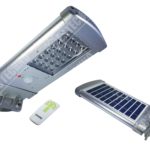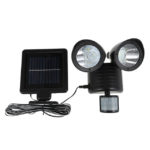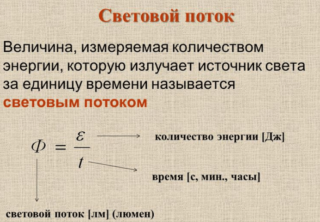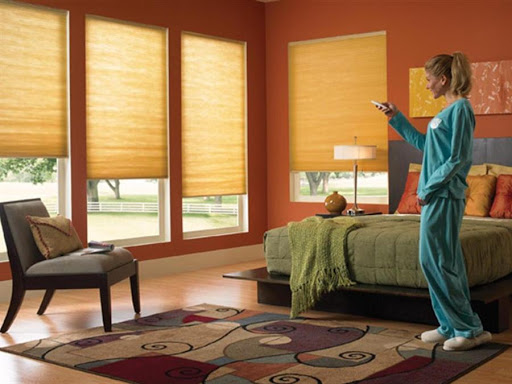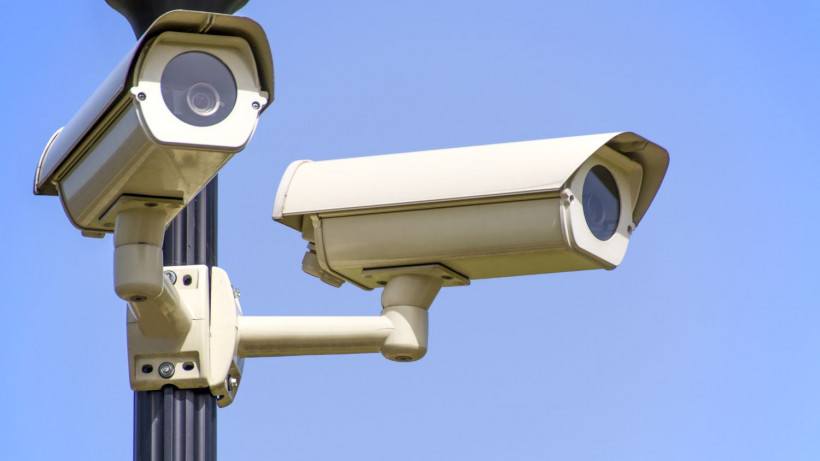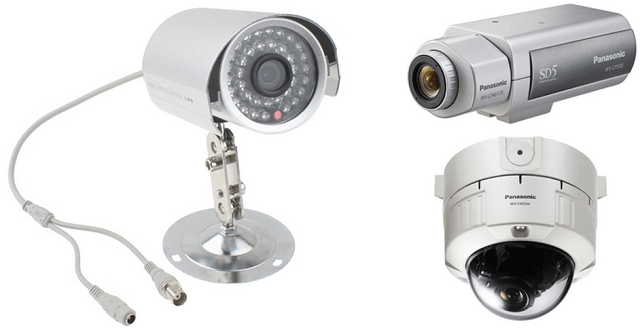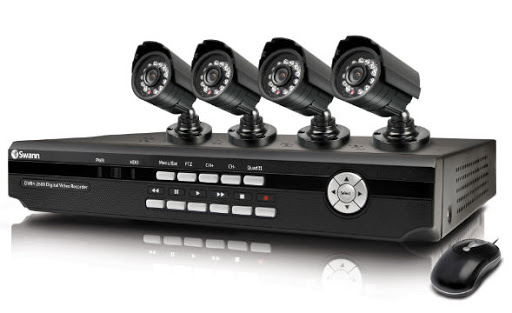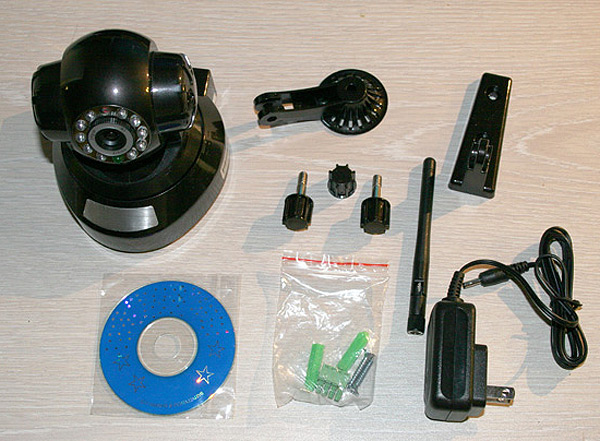Innovative technologies are actively intruding into various spheres of society. Solar batteries and luminaires created on their basis that use the energy of sunlight in their work are widespread. They owe their popularity to their economy, ease of installation and environmental friendliness during operation. They do not need electricity, and this, in turn, does not require the supply of electrical wires.
Device and principle of operation
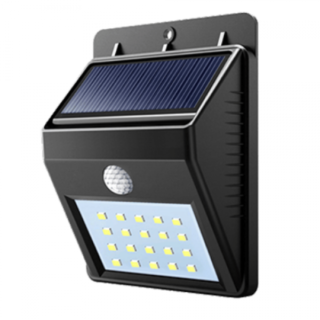
Structurally, any solar-powered luminaire with a motion sensor includes:
- a solar panel that converts sunlight into electricity;
- rechargeable nickel-cadmium battery with a capacity of about 700 mA / h, designed to accumulate electricity supplied from the solar battery;
- the minimum charge controller, which controls the processes of charging and discharging the battery, is also used as a control unit for the entire set;
- LED light source;
- a photocell that automatically turns on the light source at nightfall and turns it off at dawn.
- a motion sensor that turns on a light source when an object moves in the observation area.
The photocell and the motion sensor work in tandem, turning on the light source only if movement is detected in the immediate vicinity of the luminaire at nightfall. In the absence of one of the conditions (movement or darkness), the device is in the off state.

The light source is spot light LEDs (SMDs) or light emitting diodes (LEDs). The latter are found only in outdated models. A standard matrix has a power of no more than 50 W, therefore, several matrices are installed in powerful floodlights.
Structurally, the matrix is a special substrate on which a certain number of crystals are placed. If at least one crystal fails, the entire matrix needs to be replaced.
In LED luminaires of the new generation, instead of a matrix, point LEDs are used. Their main advantage is that if one LED fails, the rest continue to work.
A defective SMD LED must be replaced immediately, since the rest of the LEDs begin to work in an abnormal mode and can also break down very soon.
The anti-corrosion dust and moisture proof housing of the lantern is made in versions with different degrees of protection. As a rule, the latter is indicated on the packaging. Inside the housing, covered with a protective cover, there is a matrix or substrate with point LEDs, which can be reached by removing the reflective reflector. In this case, the protective cover can be made of tempered or structured glass.
Criterias of choice
The choice of a solar-powered LED flashlight with a motion sensor is primarily determined by its purpose.
Scope of use:
- lighting of streets and sidewalks, as well as courtyards, highways, etc. (special powerful floodlights);
- highlighting the facades of houses and historical monuments (architectural lamps);
- lighting of individual zones in parks, squares and in personal plots (landscape lamps).
In addition to the functional purpose, the following are of no small importance:
- luminous flux power;
- light scattering angle;
- appearance and design features of the lamp.
The basic parameters of a wireless lamp depend on the conditions of use:
- degree of protection;
- luminous flux strength;
- light power.
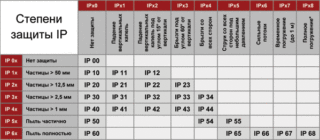
- 6 - full protection of the case against dust and any (even accidental) penetration inside;
- 4 - protection of the internal contents of the case from the ingress of drops and splashes falling from any angle.
The quality of illumination of a territory or an object depends on the height of the suspension of the luminaire and the angle of emission of the luminous flux. It is possible to improve the quality of lighting by installing several low-power flashlights instead of one powerful lamp. Moreover, their total power must correspond to the calculated value.
Calculation of technical parameters
The main technical parameters of a solar-powered luminaire are the luminous flux power (measured in lumens) and the illumination level dependent on it (measured in lux).
- F is the power of the luminous flux, lm;
- E - illumination, lx
- S - illuminated area, sq. M.
In this case, S = 3.14 h² x 2 (1-cos α / 2), where:
- h is the distance from the illuminated surface to the luminaire, m;
- α - angle of light emission, degree.
When calculating the level of illumination of an object, it is necessary to take into account the reflective features of objects in the illumination zone, as well as uneven illumination and the loss of the quality of the LED luminescence after a certain time.
Installation and configuration
Solar-powered luminaires equipped with motion sensors are either wall-mounted or attached to a specially selected support. The process of installing and configuring them does not differ in complexity, however, it depends on the design of the product. Therefore, before installation, you need to carefully read the instructions.
The lighting device must be unfolded with a frontal plane towards the serviced area. Luminaires equipped with their own support are easier to adjust as they can be easily rotated around their own axis.
Advantages and disadvantages
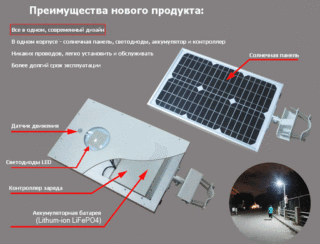
- the possibility of using in those places where there are no power lines (country houses, summer cottages, etc.);
- ease of installation and installation;
- high efficiency of lamps, due to the fact that during their installation and operation there is no need to carry out earthworks and pay for the consumed electricity;
- there is no need for the constant presence of service personnel;
- long trouble-free operation of lamps;
- high protection of luminaires from external climatic influences;
- a wide range of products;
- environmental friendliness and safety during operation.
Disadvantages:
- The luminaire must be replaced in case of failure. This is especially true for models designed to illuminate small architectural forms and landscape areas in personal plots.
- It is advisable to install lights only in those places where they are guaranteed to get sunlight, etc.
Solar-powered luminaires can be rearranged at any time and in any order without any preparatory work. However, so that small animals and birds do not fall into the "field of view" of motion sensors, they still have to be regulated.
Top Models
When choosing a luminaire, the buyer should pay attention to the manufacturer's brand. It is recommended to avoid unknown manufacturers offering their products at dumping prices.
Among the time-tested lamps, the products of such companies attract attention:
- Raylight (Japan), which supplies Russia with a wide range of high quality solar-powered luminaires;
- Holux (Germany), offering buyers Chinese-made lamps, while guaranteeing their trouble-free operation;
- Ever Brite (China), etc.
The range of motion sensing solar luminaires is able to satisfy the most demanding customers.


